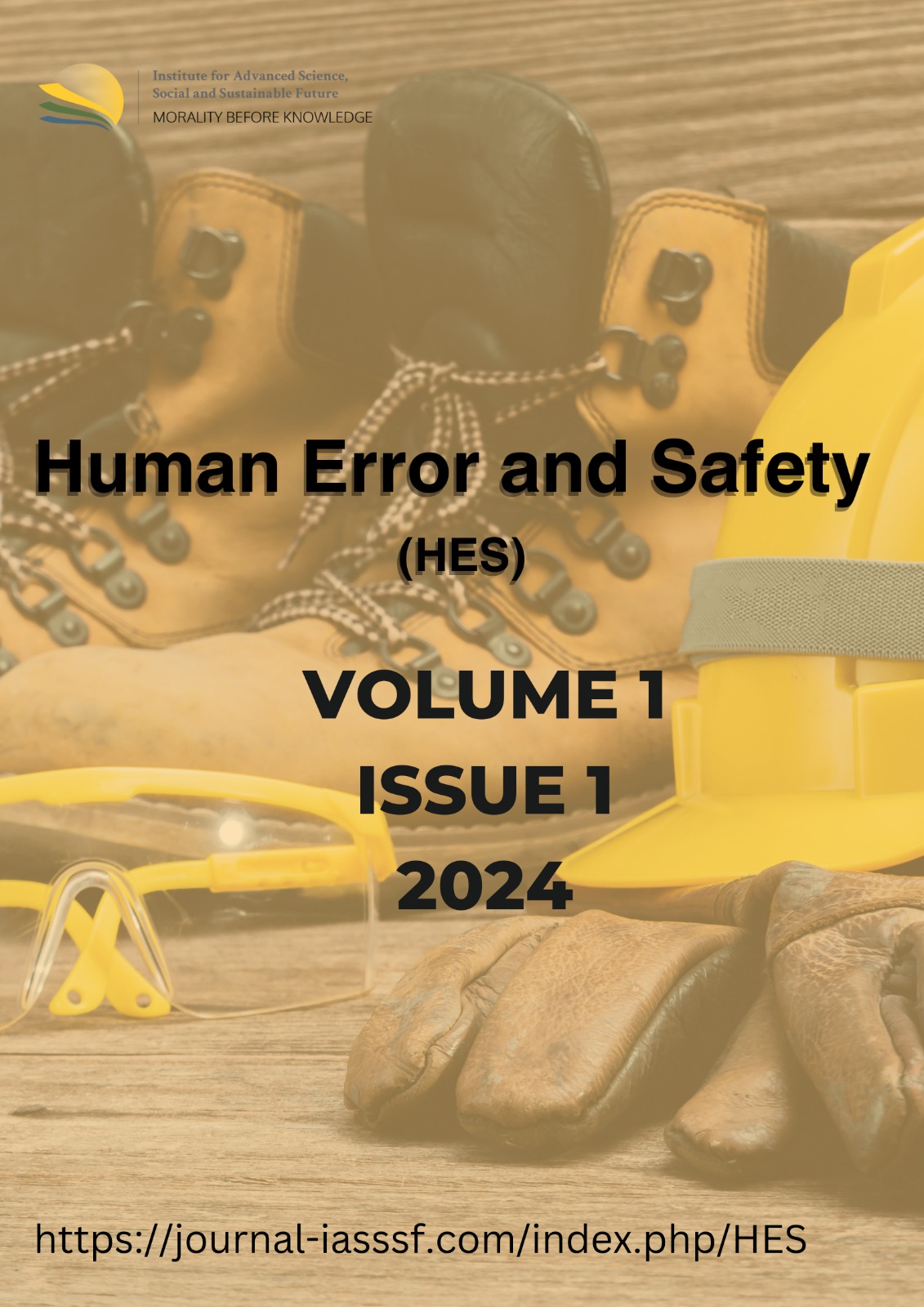Keberlanjutan pengelolaan limbah bahan berbahaya dan beracun melalui co-processing di industri semen
DOI:
https://doi.org/10.61511/hes.v1i1.2024.728Keywords:
alternative fuel; alternative raw materials; B3 waste; co-processing; utilization.Abstract
Background: One of environmental problem in industrial activities is hazardous waste management. Co-processing in cement industry is ex-pected to be a solution of hazardous waste management. Methods: The research was conducted at cement factory which has been doing co-processing activities. Findings: Co-processing activities needs to be evaluated regarding the sustainability. To fulfill sustainable co-processing activities, hazardous waste management by cement industry requires analysis of economic benefits, social acceptability, and environmental requirements. Based on the research, it can be concluded that PT. ITP and PT. HI in co-processing activities can be said to meet the rules of sustainability. Conclusion: PT. ITP has conducted hazardous waste management for 41 hazardous waste gen-erators, 22 types of hazardous waste, and 7,861.23 tons of hazardous waste. PT. HI has conducted hazardous waste management for 71 hazardous waste generators, 53 types of hazardous waste, and 59,494.91 tons of hazardous waste. The average efficiency per year obtained from (1) the use of alternative raw materials of 1.5% for PT.ITP and 4.24% for PT. HI (2) alternative fuel usage of 3.41% and for PT.ITP and 8.23% for PT.HI. Hazardous waste management spend less cost if managed through co-processing. For the community, co-processing activities provide jobs opportunity. The stakeholders accept the existence of co-processing activi-ties at the cement plant as a hazardous waste management service with mean score of 76% and has a frequency of 39% for per-ception strongly agreed. Co-processing has fulfilled environmental requirements consisting of compliance with air quality stand-ards, dioxin, furans, suitability of hazardous waste type, and product SNI compliance.
References
Alberini, A., & Frost, S. (2007). Forcing firms to think about the future: Economic incentives and the fate of hazardous waste. Environmental and Resource Economics, 36(4), 451-474. https://link.springer.com/article/10.1007/s10640-006-9037-8
Alcock, R. E., Sweetman, A. J., & Jones, K. C. (2001). A congener-specific PCDD/F emissions inventory for the UK: do current estimates ac-count for the measured atmospheric burden?. Chemosphere, 43(2), 183-194. https://doi.org/10.1016/s0045-6535(00)00173-9
Alhakami, A. S., & Slovic, P. (1994). A psycho-logical study of the inverse relationship between perceived risk and perceived benefit. Risk analy-sis, 14(6), 1085-1096. https://doi.org/10.1111/j.1539-6924.1994.tb00080.x
Ali, M. B., Saidur, R., & Hossain, M. S. (2011). A review on emission analysis in cement industries. Renewable and Sustainable Energy Reviews, 15(5), 2252-2261. https://doi.org/10.1016/j.rser.2011.02.014
Al-Khashman, O. A., & Shawabkeh, R. A. (2006). Metals distribution in soils around the cement factory in southern Jordan. Environmen-tal pollution, 140(3), 387-394. https://doi.org/10.1016/j.envpol.2005.08.023
Andronescu, E., & Puscasu, D. V. (2012). Emisiile De Dioxine Si Furani În Industria Cimen-tului*/Releases Of Dioxins And Furans In The Cement Industry. Revista Romana De Materiale, 42(3), 237-241. https://solacolu.chim.upb.ro/pag237-241web.pdf
Baidya, R., Ghosh, S. K., & Parlikar, U. V. (2016). Co-processing of industrial waste in Ce-ment Kiln–A Robust system for material and en-ergy recovery. Procedia Environmental Scienc-es, 31, 309-317. https://doi.org/10.1016/J.PROENV.2016.02.041
Bauer, M. W. (2009). The evolution of public understanding of science—discourse and com-parative evidence. Science, technology and so-ciety, 14(2), 221-240. https://doi.org/10.1177/097172180901400202
Benhelal, E., Zahedi, G., Shamsaei, E., & Ba-hadori, A. (2013). Global strategies and poten-tials to curb CO2 emissions in cement indus-try. Journal of cleaner production, 51, 142-161. https://doi.org/10.1016/j.jclepro.2012.10.049
Borghetti Soares, J., & Tiomno Tolmasquim, M. (2000). Energy efficiency and reduction of Co2 emissions through 2015: The brazilian cement industry. Mitigation and Adaptation Strategies for Global Change, 5(3), 297-318. https://link.springer.com/article/10.1023/A:1009621514625
Braungart, M., McDonough, W., & Bollinger, A. (2007). Cradle-to-cradle design: creating healthy emissions–a strategy for eco-effective product and system design. Journal of cleaner produc-tion, 15(13), 1337-1348. https://doi.org/10.1016/j.jclepro.2006.08.003
Brownell, E. (2011). Negotiating the new eco-nomic order of waste. Environmental History, 16(2), 262-289. https://www.researchgate.net/publication/273367964_Negotiating_the_New_Economic_Order_of_Waste
Chatziaras, N., Psomopoulos, C. S., & Themelis, N. J. (2016). Use of waste derived fuels in cement industry: A review. Management of Environmen-tal Quality, 27(2), 178-193. https://doi.org/10.1108/MEQ-01-2015-0012
Chen, T., Guo, Y., Li, X., Lu, S., & Yan, J. (2014). Emissions behavior and distribution of polychlo-rinated dibenzo-p-dioxins and furans (PCDD/Fs) from cement kilns in China. Environmental Sci-ence and Pollution Research International, 21(6), 4245-53. https://doi.org/10.1007/s11356-013-2356-8
Davidovits, J. (Ed.). (2005). Geopolymer, Green Chemistry and Sustainable Development Solu-tions: Proceedings of the World Congress Geo-polymer 2005. Geopolymer Institute. https://books.google.co.id/books/about/Geopolymer_Green_Chemistry_and_Sustainab.html?id=wIFo7L_zO8AC&redir_esc=y
Davidson, E. (2014). Defining the trend: Cement consumption vs GDP. Global Cement. https://www.globalcement.com/magazine/articles/858-defining-the-trend-cement-consumption-vs-gdp
Department for Environment Food and Rural Affairs United Kingdom (2011). Guidance on applying the waste hierarchy to hazardous waste. London. https://www.gov.uk/government/publications/guidance-on-applying-the-waste-hierarchy-to-hazardous-waste
Edwards, P. 2015. The Rise and Potential Peak of Cement Demand in the Urbanized World. Cornerstone, The Official Journal of The World Coal Industry. https://abmec.org.uk/wp-content/uploads/2019/10/Cornerstone-Volume-3-Issue-2.pdf
El Haggar, S. (2010). Sustainable industrial de-sign and waste management: cradle-to-cradle for sustainable development. Academic Press. https://www.researchgate.net/publication/230771035_Sustainable_Industrial_Design_and_Waste_Management_Cradle-to-Cradle_for_Sustainable_Development
Ekincioglu, O., Gurgun, A. P., Engin, Y., Tarhan, M., & Kumbaracibasi, S. (2013). Approaches for sustainable cement production–A case study from Turkey. Energy and Buildings, 66, 136-142. https://doi.org/10.1016/j.enbuild.2013.07.006
EU Commission. (2008). Directive 2008/98/EC of the European Parliament and of the Council of 19 November 2008 on waste and repealing certain directives (Waste framework directive, R1 formula in footnote of attachment II). https://ec.europa.eu/eurostat/documents/3859598/5915865/KS-RA-10-011-EN.PDF/39cda22f-3449-4cf6-98a6-280193bf770c
Fabrellas, B., Larrazabal, D., Martinez, M. A., Sanz, P., Ruiz, M. L., Abad, E., & Rivera, J. (2004). Global assessment of PCDD/F emissions from the Spanish Cement Sector. Effect of con-ventional/alternative fuels. Organohalogen Compd, 66, 905-911. https://citeseerx.ist.psu.edu/document?repid=rep1&type=pdf&doi=0b5fa5da2866722ef2688144730a5c506fe1ffa3
Fischhoff, B., Slovic, P., Lichtenstein, S., Read, S., & Combs, B. (1978). How safe is safe enough? A psychometric study of attitudes to-wards technological risks and benefits. Policy sciences, 9(2), 127-152. https://link.springer.com/article/10.1007/BF00143739
Frewer, L. J., Hedderley, D., Howard, C., & Shep-herd, R. (1997). ‘Objection’mapping in determin-ing group and individual concerns regarding ge-netic engineering. Agriculture and Human Val-ues, 14(1), 67-79. https://link.springer.com/article/10.1023/A:1007331524432
Giddings, B., Hopwood, B., & O'brien, G. (2002). Environment, economy and society: fitting them together into sustainable development. Sustain-able Development, 10(4), 187-196. https://doi.org/10.1002/sd.199
Downloads
Published
Issue
Section
Citation Check
License
Copyright (c) 2024 Human Error and Safety

This work is licensed under a Creative Commons Attribution 4.0 International License.











